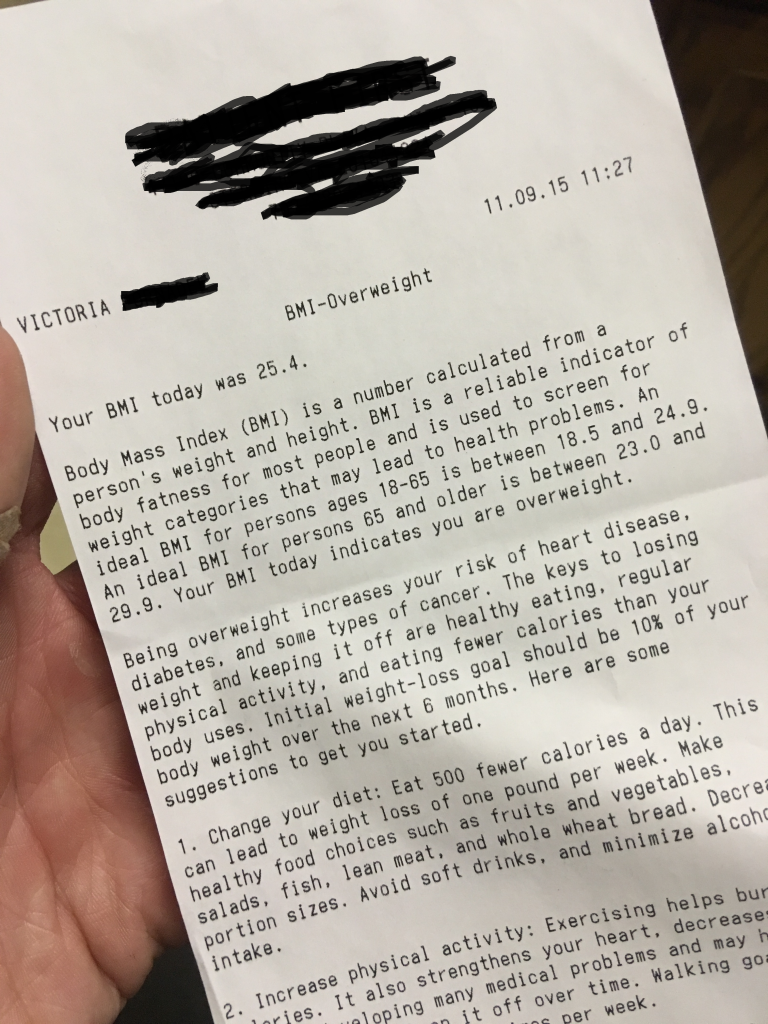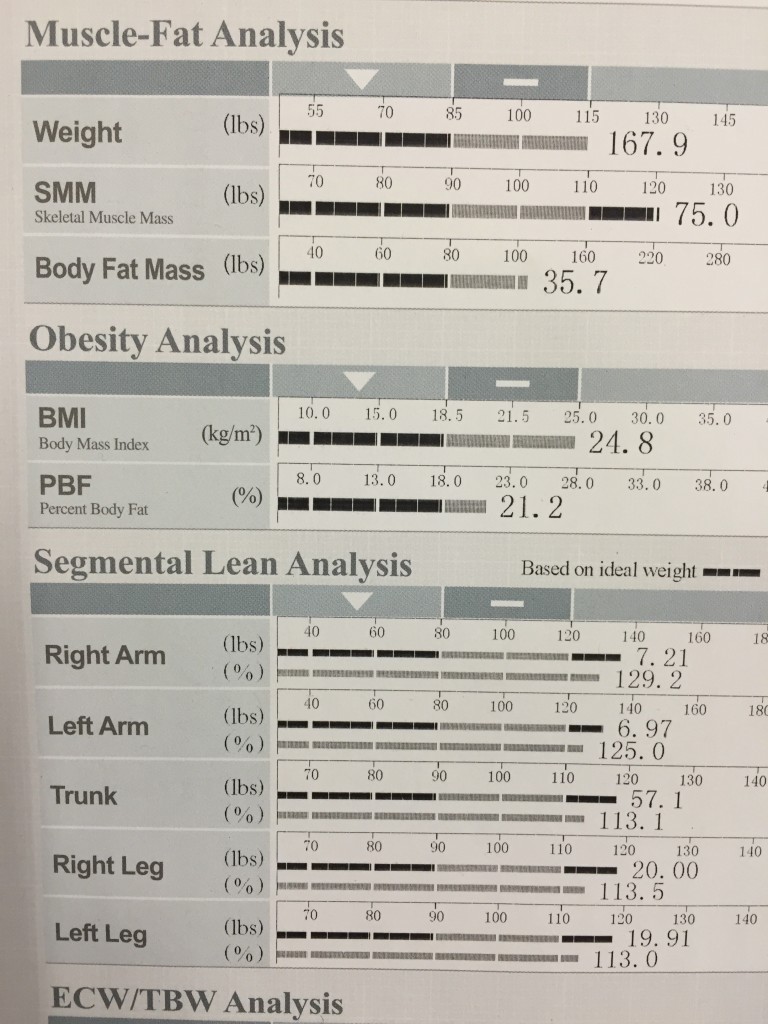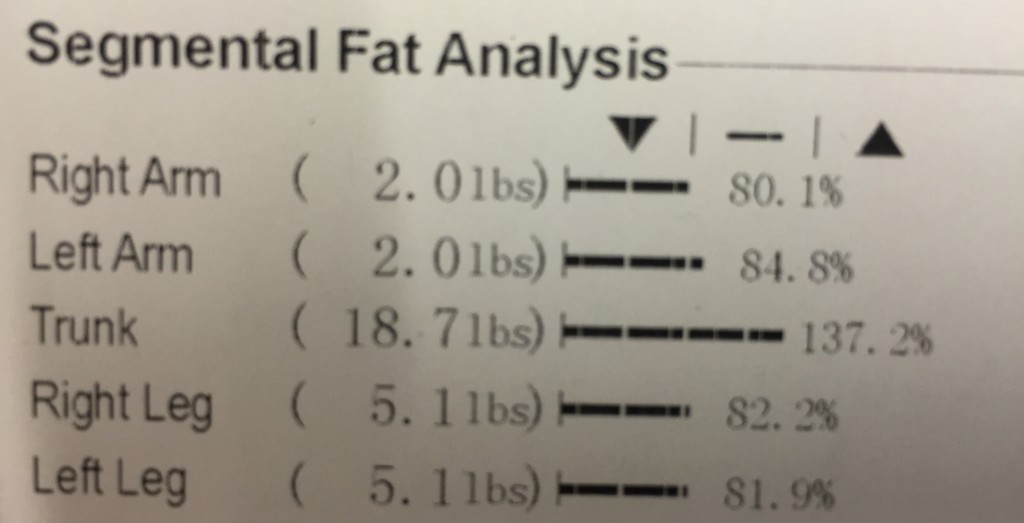I need to start by saying that I honestly never planned on making a post like this one. But, a situation occurred a few months ago with one of our BSP NOVA family members on a routine visit to the Dr’s office, and here we are.
Meet Victoria:

Victoria is a lifelong athlete, most recently having played volleyball at the collegiate level.
She is an active, fit, young woman.
No one in their right mind would look at Victoria and think, “hmmm… she could stand to lose a few pounds.”
But, that very conversation actually did happen on her routine visit to the Dr’s office.
No, I’m not kidding.
After hopping on the scale like most people do at their check-up, she was handed this:
 No accompanying conversation to explain that BMI is not really a big deal for many people. No pointing out the fact that she is a healthy athlete, most of whom rank “high” on their BMI.
No accompanying conversation to explain that BMI is not really a big deal for many people. No pointing out the fact that she is a healthy athlete, most of whom rank “high” on their BMI.
Nope, she was blindly handed a piece of paper recommending that she eat 500 fewer calories a day and increase her physical activity.
“BMI can be used to screen for weight categories that may lead to health problems but it is not diagnostic of the body fatness or health of an individual.”
– Centers for Disease Control and Prevention
But it’s cool, Victoria knows that she’s not fat, right?
Well, she showed this to one of our coaches, honestly asking if she should be concerned.
Now, imagine if Victoria didn’t have a source to reach out to for clarification.
What if she cut 500 calories a day and moved more than she already does?
This could have been a recipe for disaster…
So what did we do?

Well, luckily we have the InBody 570 (learn more by clicking the link).
We were able to set her up and show her that in contrast to what the Dr’s office told her, she is actually lean, and carries a lot more muscle than most women her age, hence the higher BMI.
Which, let’s be honest, really was not even high to begin with!
You may also notice that in the few days between her Dr’s office visit and her InBody test, she actually fell within the acceptable BMI range…
The only reason her BMI is on the high end of acceptable now, is the fact that she carries that extra muscle!
Oh, and this is a GREAT thing…
In looking deeper into her InBody results, we see that she is actually in the VERY lean category on all segments, except for the torso, where she still falls into the lean category.

That’s completely normal for people to carry more body fat in their torso. Think about how much more is going on in there (chest, organs, abdomen, etc…). For crying out loud, she has visible abs!
The Bigger Issue Here
The real problem with blindly giving advice based off of BMI is that this Dr’s office is actually missing the opportunity to help people that truly need it, while also (probably) creating more psychological harm than good for most.
The flip side of the coin is that they are probably telling a lot of people to keep up the great work, when these people actually need the intervention!
Who am I referring to?
Individuals who fall into an acceptable BMI category, but they actually have high percentages of body fat and/or low skeletal muscle mass.
Maybe you’ve heard them deemed skinny fat.
I don’t care for that term, as there’s absolutely no need to call anyone fat, but you get the point.
There are LOTS of people with “good” BMI’s that truly do need nutrition and physical activity interventions.

With that being said, they still shouldn’t be handing out blind prescriptions spit out by a computer.
This is where building relationships with a solid, professional referral network would be a great idea.
Maybe this is you?
No big deal! Interventions are simple.
No crazy crash diets.
No insane, punishing workouts.
You need a sensible, sustainable approach to diet and exercise.
Small tweaks over a long period of time.
Start.
Need help?
Latest posts by Chris Merritt (see all)
- Why Your Favorite Instagram Model’s Butt Program is a Waste of Time - 2017/08/30
- The ABC’s of the Kettlebell Swing - 2017/08/23
- I’m New to the Gym, What Should I Do? - 2017/08/16
